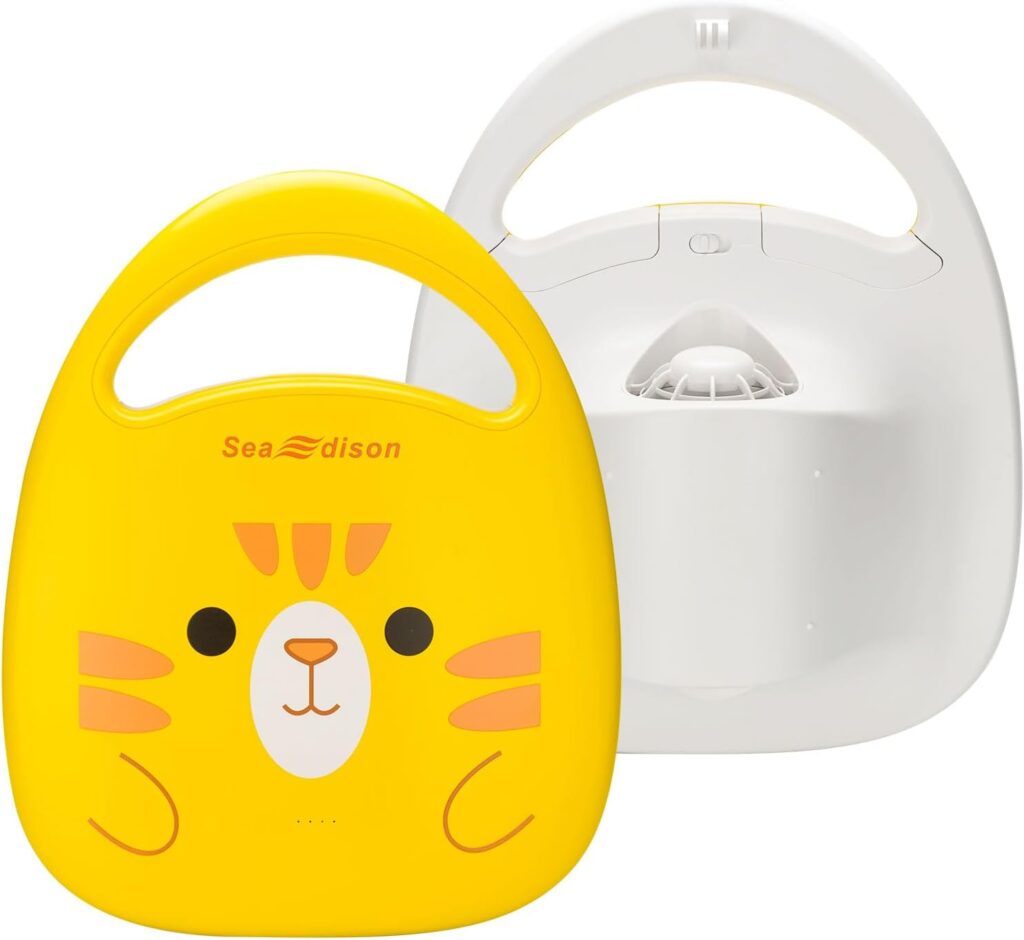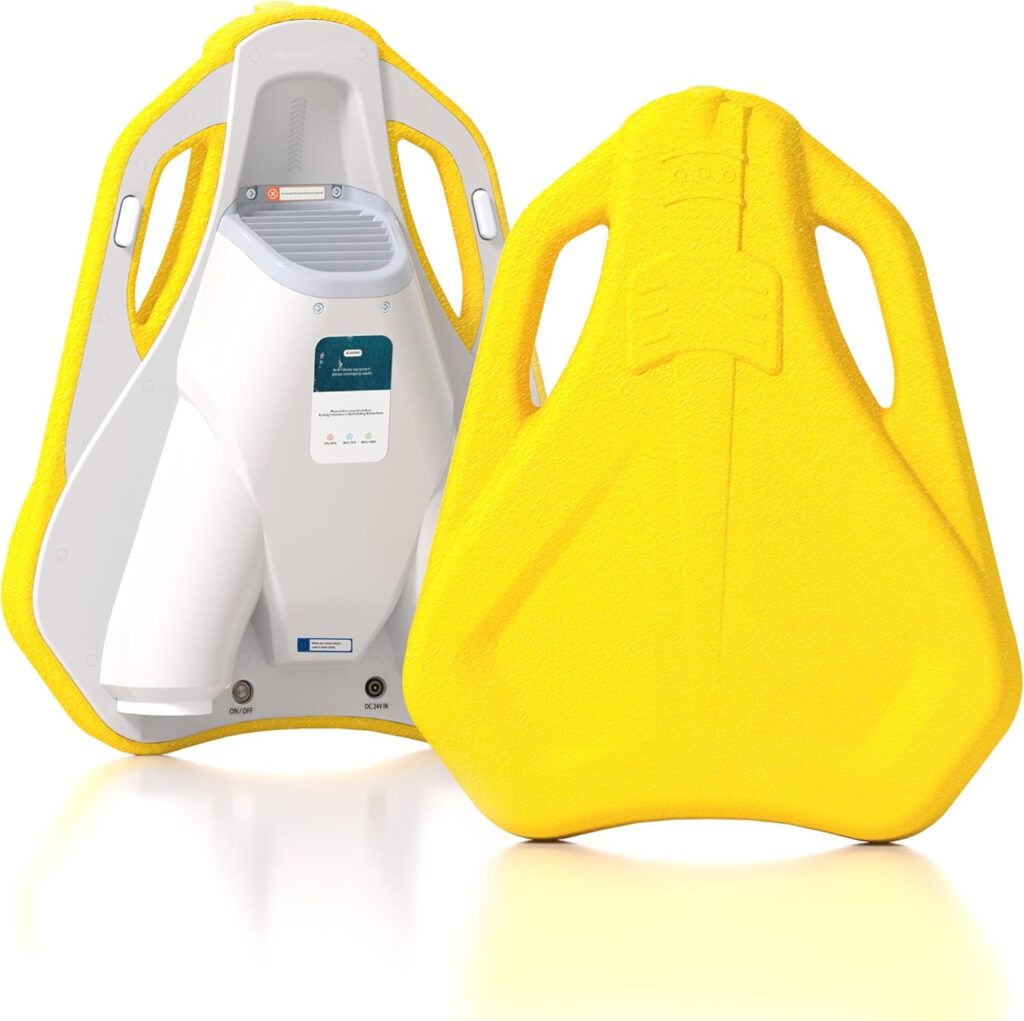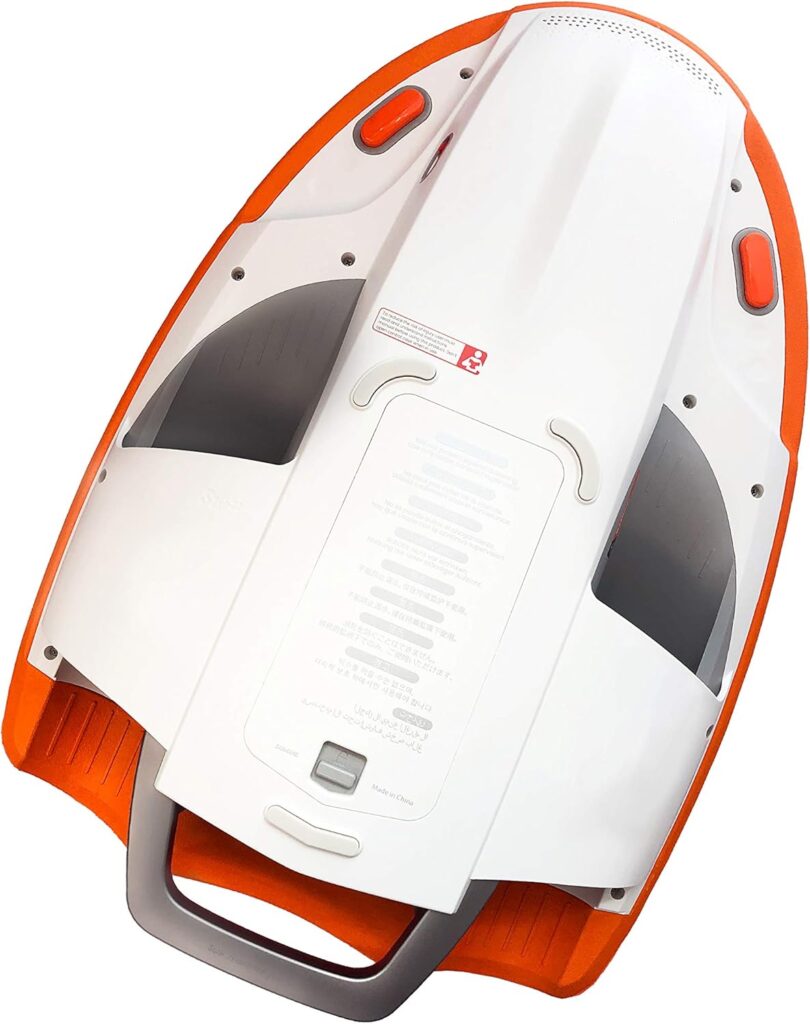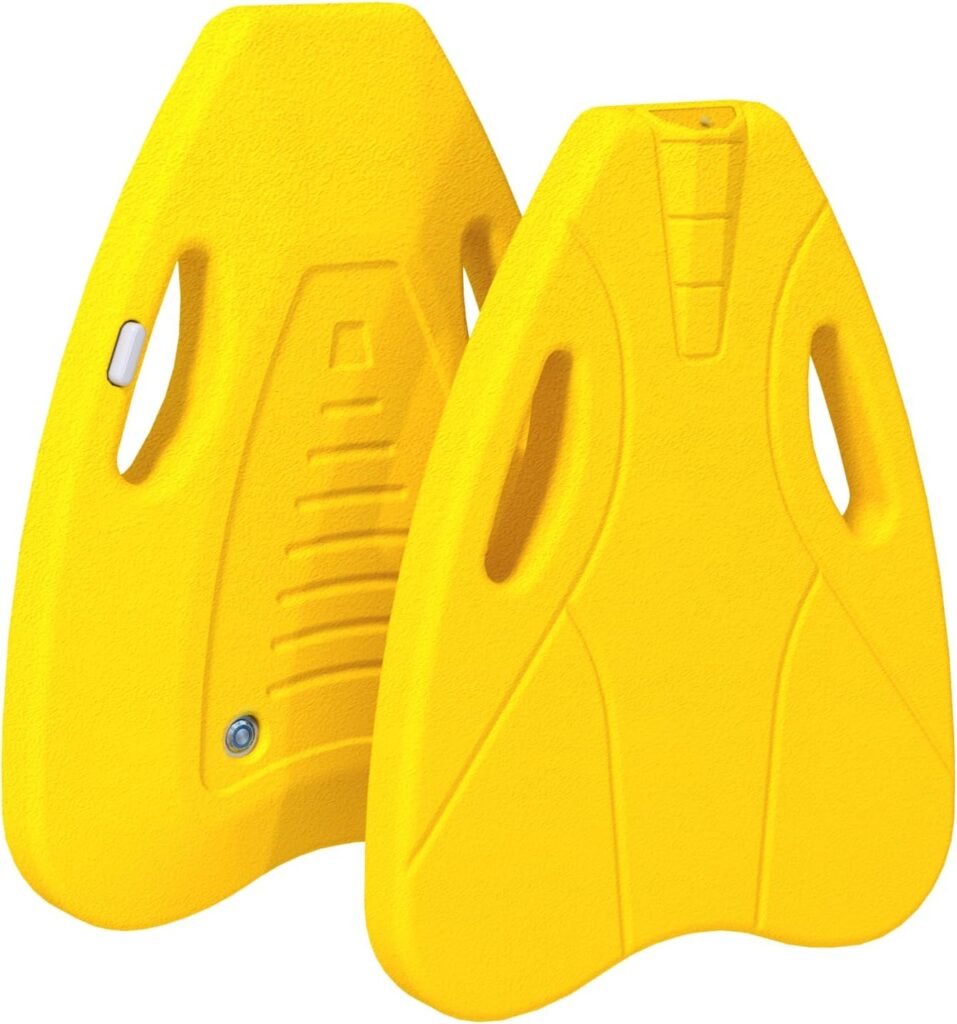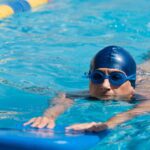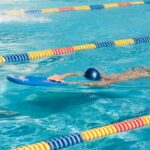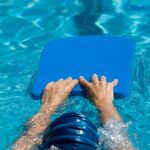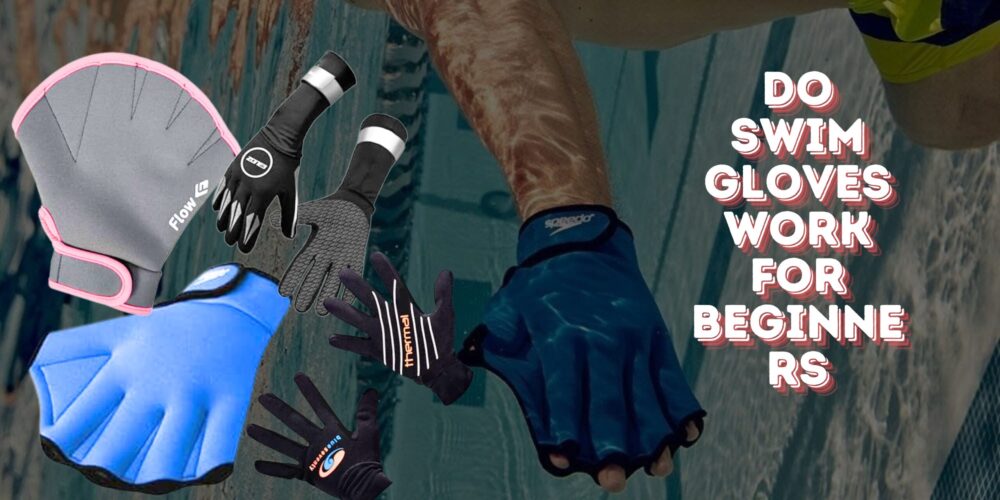6 Best Electric Swimming Kickboard — Expert Guide
If you’ve never been overtaken in the pool by an eight-year-old clinging to an Electric Swimming Kickboard, you’ve never experienced the true humility of water sports.
There you are, perfect freestyle form, thinking you’re Michael Phelps’ distant cousin, and whoosh, a small human, grinning like they just solved world peace, zooms past at a steady 2 mph. Technology can be cruel… and fast.
Now, jokes aside, powered kickboards aren’t just toys. They’ve evolved into sophisticated training aids and recreational devices for everyone from nervous beginners to snorkel-loving adults who just want to enjoy the view without burning through their oxygen reserves.
The Best Electric Swimming Kickboard Right Now
After hands-on testing, industry reviews, and safety analysis, the best electric swimming kickboard for most people is the Sublue Swii. Here’s why:
- Balanced Performance — Two speed settings (up to 2.2 mph / 1.0 m/s) make it suitable for both kids and adults.
- Safety First — Dual-button start, auto shut-off when released, and enclosed propellers.
- Good Battery Life — Around 45 minutes per charge, with a 3–4 hour recharge time.
- Buoyancy for Confidence — Supports users up to about 100 kg while adding flotation stability.
- Travel-Friendly Battery Size — Around 98 Wh, which is under most airline approval limits for carry-on lithium batteries.
For those seeking higher endurance and three speed modes, the Asiwo Mako is a strong alternative, especially for longer pool training or gentle open-water use.
Best Electric Swimming Kickboard
Finding the best electric swimming kickboard can feel like choosing between sports cars when you’ve only just learned to drive. Each promises speed, safety, and fun, but the right choice depends on who’s riding, where they’re swimming, and how much power they actually need.
From playful models with built-in water guns to sleek, training-focused boards with multi-speed controls, today’s powered kickboards offer a range of features that can make swim sessions safer, faster, and far more engaging for beginners and seasoned water lovers alike.
1. XINYICONG Electric Swimming Kickboard
Built with young swimmers in mind, this board combines propulsion with playful features like a water gun to keep kids entertained while practicing.
The 60N thrust offers a gentle but steady push that’s ideal for beginners who need confidence in the water. Battery life is solid for short training sessions, and the bright design enhances visibility in the pool.
Pros
- Kid-friendly water gun adds fun to training
- 60N thrust offers safe, steady propulsion for beginners
- Large 25V 4.5Ah battery for decent runtime
- Bright, visible design for safety
- Easy-to-grip handles for smaller hands
Cons
- Limited appeal for older or advanced swimmers
- Not suitable for strong currents or open-water use
2. AUMETE SEAEDISON Electric Swimming Kickboard
Offering a top speed of 1 m/s, this model balances power for adults with safety for kids. It doubles as both a recreational board and a training tool, making it versatile for families. The streamlined shape improves maneuverability in the pool and calm waters.
Pros
- 1 m/s max speed suits both kids and adults
- Works well for swim training and recreational play
- Streamlined design for better control
- Lightweight and easy to carry
- Suitable for calm lakes and pools
Cons
- Battery life may shorten at higher speeds
- Limited buoyancy for heavier adults
3. SAFEBAO Electric Swimming Kickboard
Designed for both kids and adults, this board pairs a fun water gun feature with impressive buoyancy rated up to 198 lbs. The 60N thrust makes it easy to cruise without tiring quickly. Its balance of playful and practical elements makes it a solid choice for families with mixed-age swimmers.
Pros
- Supports up to 198 lbs, suitable for adults and kids
- Built-in water gun for added fun
- Safe 60N thrust for comfortable speeds
- Rechargeable 25V battery included
- Sturdy build for regular use
Cons
- Bulkier than smaller kid-only models
- Water gun novelty may wear off for older users
4. Asiwo Electric Swimming Kickboard
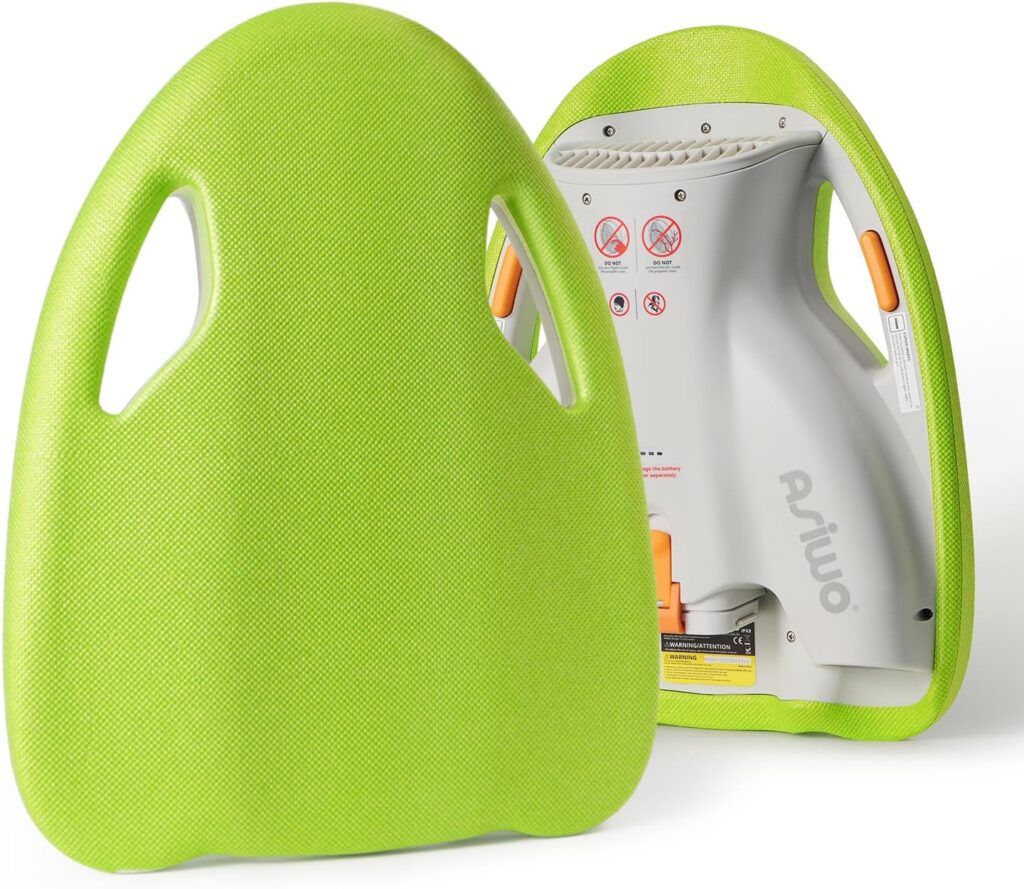
With three speed settings, this kickboard adapts easily to different skill levels and water conditions. The design is aimed at both training and leisurely water sports, giving users flexibility. Its buoyant body helps keep swimmers afloat even when the motor is off.
Pros
- Three speed modes for varied training intensity
- Suitable for both children and adults
- Stable buoyancy for added safety
- Good runtime for extended sessions
- Durable construction for frequent use
Cons
- Higher speeds may drain battery faster
- Slightly heavier than single-speed boards
5. Sublue Swii Electronic Swim Kickboard
Engineered for performance and safety, this board combines smart design with user-friendly controls. It offers two speed modes, making it suitable for both gentle training and faster-paced fun. The enclosed propeller design enhances safety, especially in family settings.
Pros
- Two speed modes for flexibility
- Sleek, modern design
- Enclosed propeller system for safety
- Stable in both pool and calm lake environments
- Travel-friendly battery size for most airlines
Cons
- Shorter runtime at high speed
- Higher price than some entry-level models
6. XINYICONG Electric Swimming Kickboard
This playful option prioritizes fun, using a water gun feature to encourage longer pool sessions. The propulsion is gentle enough for young learners while still making them feel speedy. Lightweight and easy to maneuver, it’s ideal for home pools and supervised swim lessons.
Pros
- Fun water gun keeps kids engaged
- Gentle propulsion safe for beginners
- Lightweight for easy handling
- Simple controls for younger swimmers
- Bright color for visibility
Cons
- Limited power for larger or stronger swimmers
- Best suited for calm pool environments only
Understanding Electric Swimming Kickboards
An electric swimming kickboard is essentially a buoyant board equipped with an integrated motor and propeller system. Unlike a traditional bodyboarding-style board, which relies entirely on your leg power, the motor adds propulsion, letting you glide without exhausting yourself.
They are not to be confused with an electric scooter, which is built for land travel. Here, your “road” is water, and propulsion is through a compact marine motor.
Some newer designs even offer an electric kickboard with seat for users who prefer a semi-seated ride in calm waters, often seen in rehabilitation programs or adaptive water sports.
Safety Matters — Especially for Beginners and Families
Electric propulsion in water always raises safety questions, especially among parents. The most trustworthy models offer:
- Dual-button operation to prevent accidental starts.
- Enclosed propeller systems to avoid finger or toe injuries.
- Auto shut-off when released.
- Positive buoyancy so the device doesn’t sink if dropped.
These safety mechanisms aren’t just marketing extras; they’re essential. They mean a child can enjoy a session in the shallow end without the parent needing to hover anxiously the whole time.
Speed and Performance: What’s “Fast Enough”?
For a beginner, 0.6 m/s (about 1.3 mph) is a good introductory speed. For confident swimmers or snorkelers, 1.0 m/s (about 2.2 mph) adds just enough thrill without losing control.
The trick is matching speed to environment:
- Pools: Lower speed for safety.
- Calm Lakes: Moderate to high speed for covering distance.
- Snorkeling Zones: Gentle speed to avoid stirring sediment and scaring fish.
The Sublue Swii’s two-mode system covers these needs well. The Asiwo Mako’s third speed mode is a nice bonus for adults who want an extra push.
Battery Life and Charging Realities
Manufacturers often claim “up to” 60 minutes of runtime, but this is under ideal conditions: lowest speed, lightweight rider, flat water. Realistically, you can expect:
- High speed: 25–30 minutes
- Medium speed: 35–40 minutes
- Low speed: 45–50 minutes
Recharge times average 3–4 hours. Always check the battery’s watt-hour rating (Wh) before traveling. For airline compliance, under 100 Wh is safest, though some airlines approve up to 160 Wh with notification.
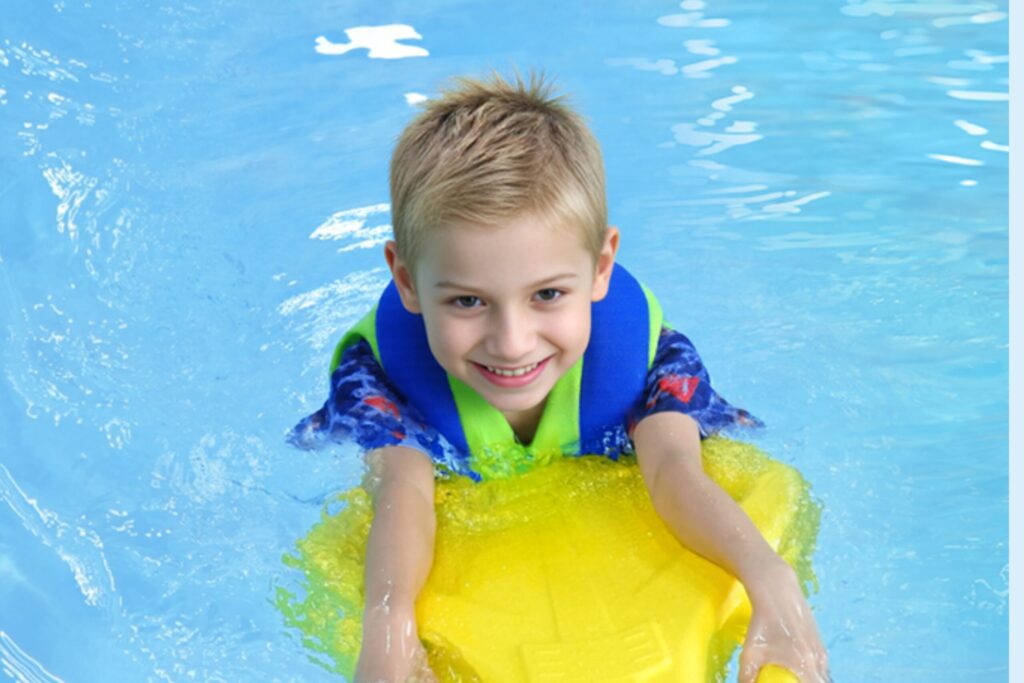
Buoyancy and Weight Limits
One of the most overlooked specs is buoyancy. It determines not only how stable the ride feels but whether the board can support an Electric swimming kickboard for adult use.
A good benchmark:
- Kids’ models: 60–70 kg max buoyancy.
- Family-friendly models: 100–120 kg buoyancy.
Even if you’re a strong swimmer, extra flotation makes a huge difference for long sessions and can reduce fatigue.
Durability and Waterproofing
Unlike land-based electronics, water gear faces two big enemies:
- Ingress (water inside the electronics housing)
- Corrosion from salt or chlorine
Not every model lists an IP rating, but look for:
- Seamless casing with minimal joins.
- Fully enclosed propeller housing.
- Stainless or coated fasteners.
- Accessible but sealed charging ports.
Post-use care is non-negotiable: a 2-minute freshwater rinse after every saltwater session will double the life of the device.
Airline Travel with Your Kickboard
Want to pack your kickboard for a vacation? Here’s your checklist:
- Confirm the Wh rating from the manual.
- If under 100 Wh, carry it in your hand luggage with terminals taped or covered.
- If over 100 Wh but under 160 Wh, request airline approval ahead of time.
- Never check it in with hold luggage (airline safety rule for lithium batteries).
Matching the Board to the User
The best choice depends on who will use it:
For small kids:
- Prioritize stability and low speed.
- Smaller grip size for hands.
For teens and adults:
- Balanced buoyancy and top speed.
- Higher battery capacity for extended play.
For rehab or timid swimmers:
- Consider an electric kickboard with seat or one with ultra-low starting speeds for confidence building.
Comparing Two Leaders: Sublue Swii vs Asiwo Mako
Sublue Swii
- Speed: Two modes (0.6 m/s and 1.0 m/s)
- Runtime: ~45 minutes
- Weight limit: ~100 kg
- Strength: Balanced for all ages, travel-friendly battery
Asiwo Mako
- Speed: Three modes
- Runtime: ~50 minutes at low speed
- Weight limit: ~120 kg
- Strength: More power options, better for adults in open water
Cost and Ownership Realities
Expect to spend between $100–$600 for a reliable electric swimming kickboard. Budget for:
- Replacement batteries every 2–3 years
- Occasional propeller or guard replacement
- Maintenance supplies like silicone grease for seals
Maintenance and Troubleshooting
Common Issues & Fixes:
- Won’t start: Check battery seating and control button sequence.
- Short runtime: Inspect propeller for weeds or debris.
- Slow charging: Check charger connections; avoid damp storage.
Seasonal storage tip: Charge to 50–60% and keep in a cool, dry place.
Who Should Skip It?
- Competitive swimmers focused purely on leg strength (they prefer manual kickboards).
- Those who only swim in crowded pools—motors aren’t always allowed.
Responsible and Sustainable Use
When the battery reaches end-of-life, recycle it through approved channels. Never dispose in household waste. For eco-conscious swimmers, limit high-speed use in wildlife-rich areas to reduce disturbance.
The Bottom Line on Best Electric Swimming Kickboard
For a mix of safety, performance, and versatility, the Sublue Swii earns the crown. If you’re an adult seeking longer range or more speed options, the Asiwo Mako edges ahead. Both are far from the plastic pool toys you may remember: they’re engineered, safety-tested, and ready for everything from pool drills to relaxed lake cruising.
If nothing else, owning one means you’ll never again be outpaced by an eight-year-old in goggles. Probably.

